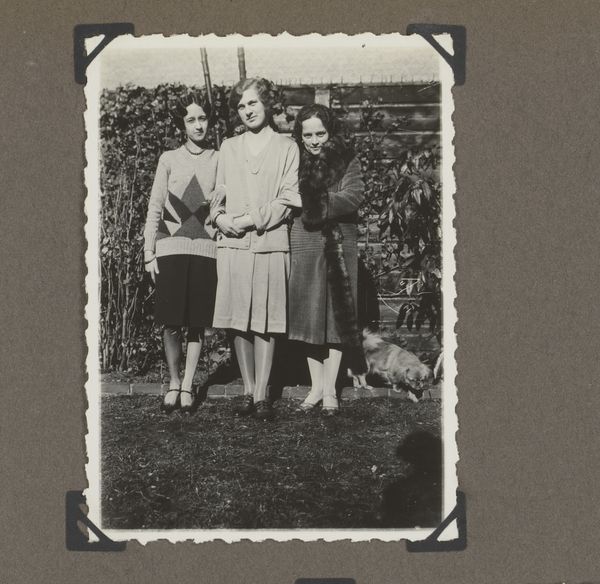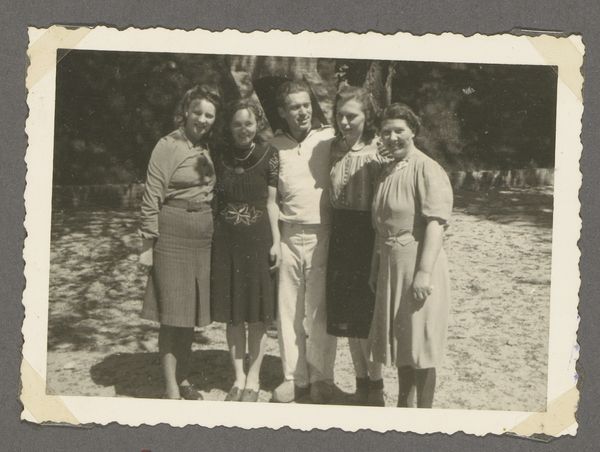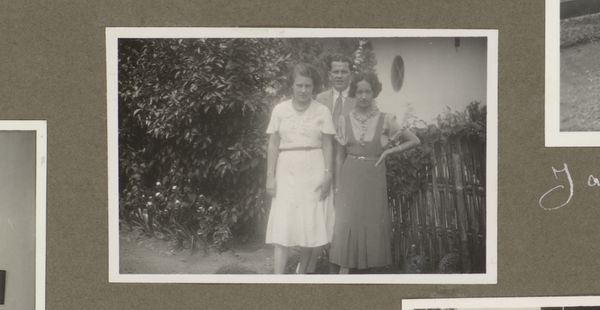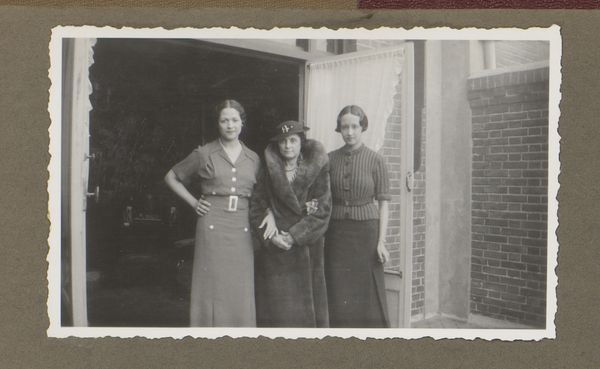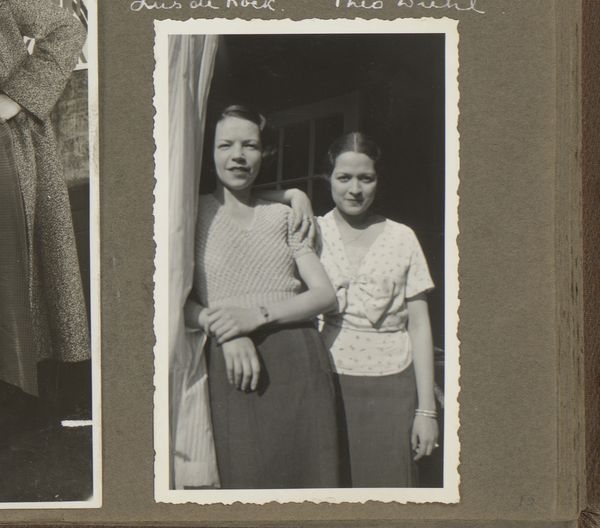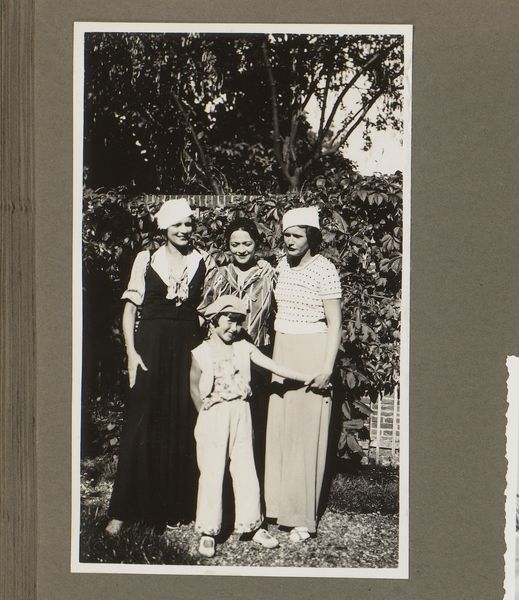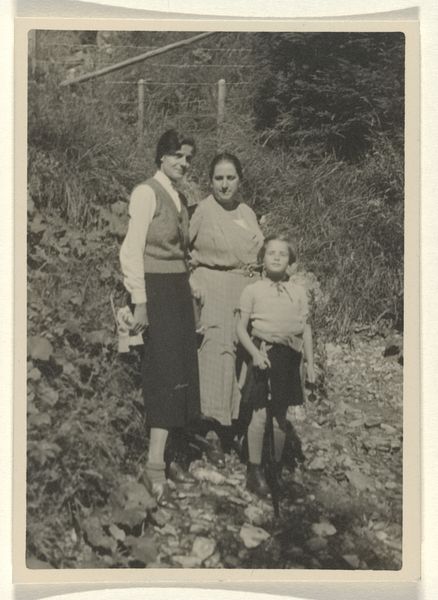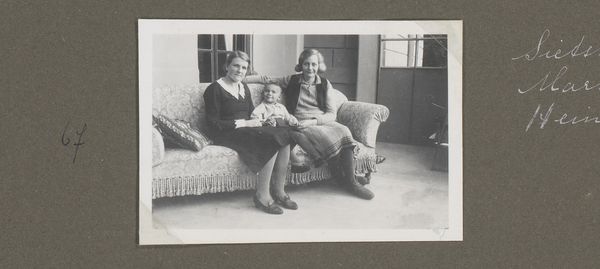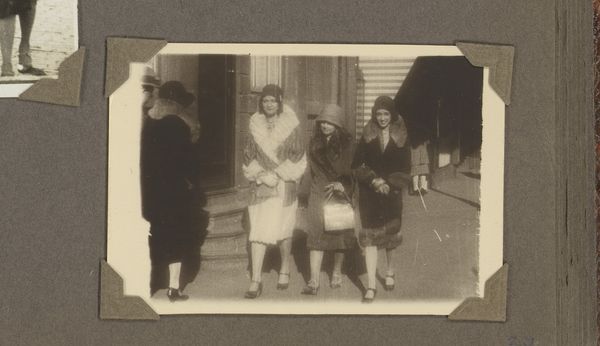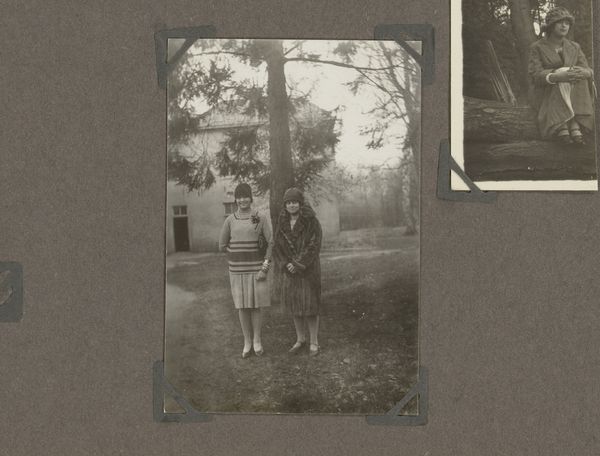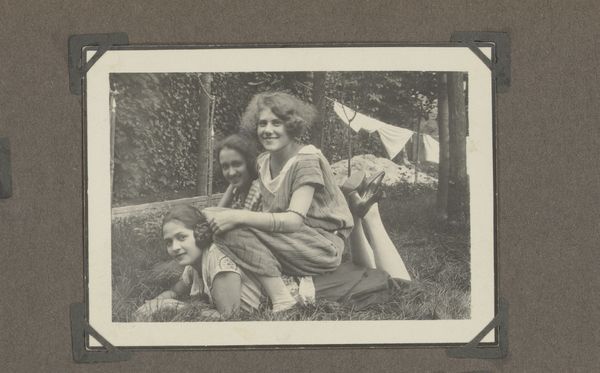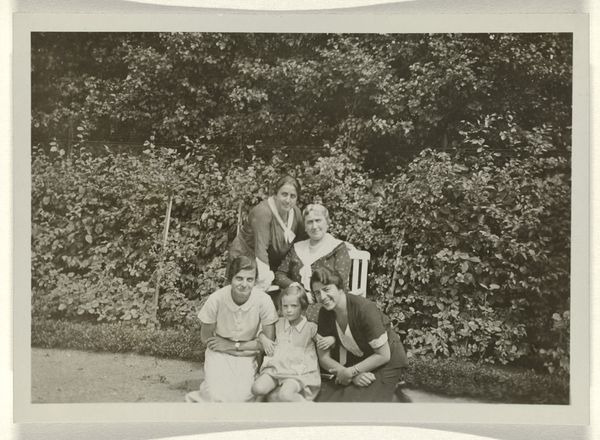
Corry Mak van Waay-Zulver, Wilhelmina van Zijll de Jong en Henriëtte Wassink 1930 - 1935
0:00
0:00
photography
#
portrait
#
archive photography
#
photography
#
historical fashion
#
group-portraits
Dimensions: height 113 mm, width 82 mm
Copyright: Rijks Museum: Open Domain
Editor: This is a black and white photograph, created sometime between 1930 and 1935. It is entitled “Corry Mak van Waay-Zulver, Wilhelmina van Zijll de Jong en Henriëtte Wassink.” It looks like it was pulled right out of a family photo album. What do you see in this group portrait? Curator: Immediately, I'm struck by the performativity of identity within the confines of the domestic sphere. Notice the careful arrangement of these women, likely friends, within this seemingly candid shot. How do their poses and attire challenge or reinforce societal expectations of women during the interwar period? What narrative are they trying to construct? Editor: I hadn’t really considered that. I just saw it as a regular snapshot! Curator: Well, consider the social and political landscape. Women were pushing boundaries, seeking greater autonomy. The flapper style, although present, is subtly toned down. The woman holding the dog in particular presents an almost masculine assertiveness in the gaze that goes beyond the simple portraiture we see in paintings of the time. Do you think this is purely accidental, or could it be deliberate self-representation? Editor: Now that you mention it, they do seem like they’re trying to convey something beyond just a casual portrait. Almost like, quiet rebellion? Curator: Precisely! It prompts questions about the nuances of female friendship, the subtle subversion of gender norms, and the importance of visual culture in understanding the lived experiences of women during this pivotal time. This photo invites us to reconsider mainstream historical narratives by amplifying the voices and visual agency of those often overlooked. Editor: I'm now looking at this photograph with completely different eyes. I am not even thinking about whether I like it but what message is trying to send. Curator: And that shift in perspective, that’s the power of situating art within its broader cultural context.
Comments
No comments
Be the first to comment and join the conversation on the ultimate creative platform.
